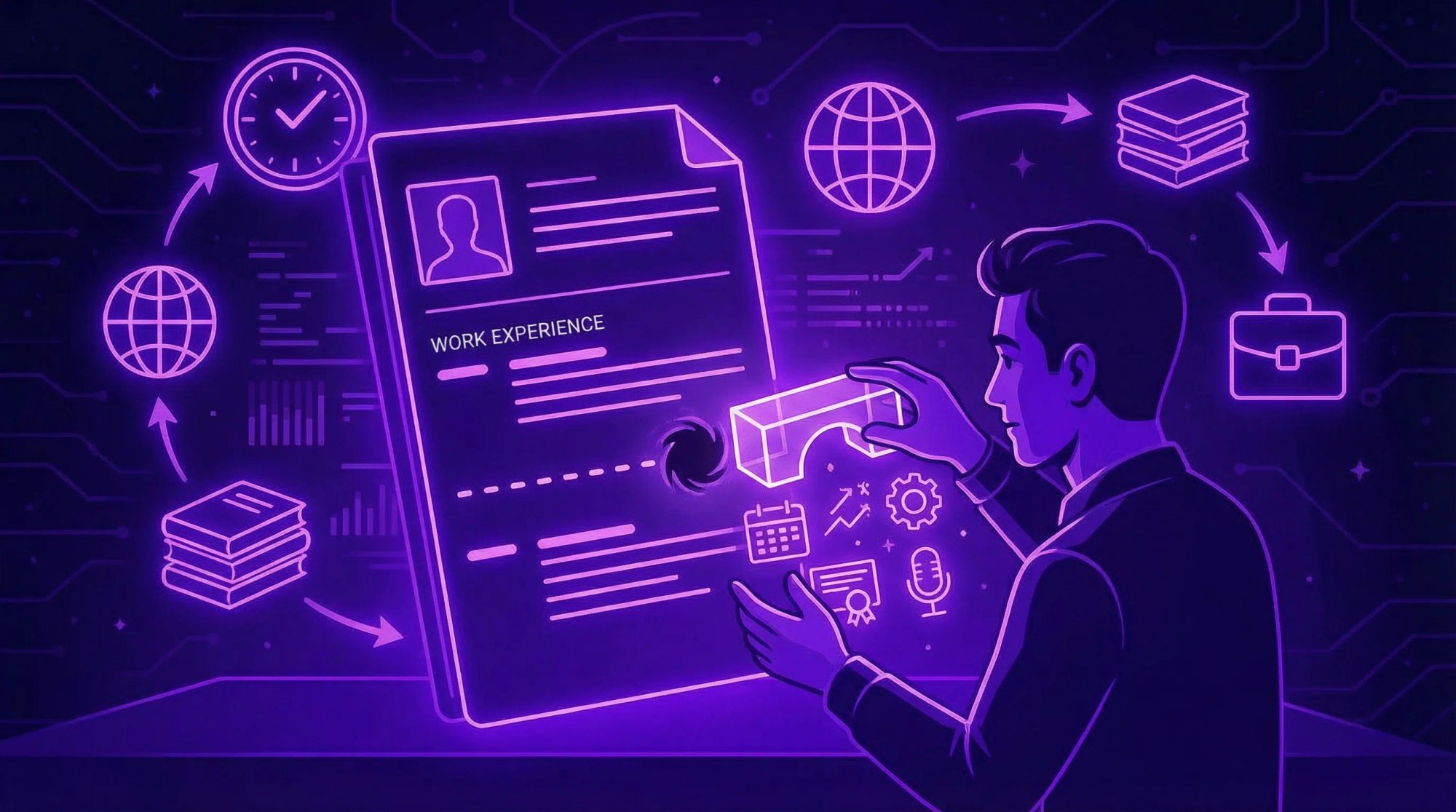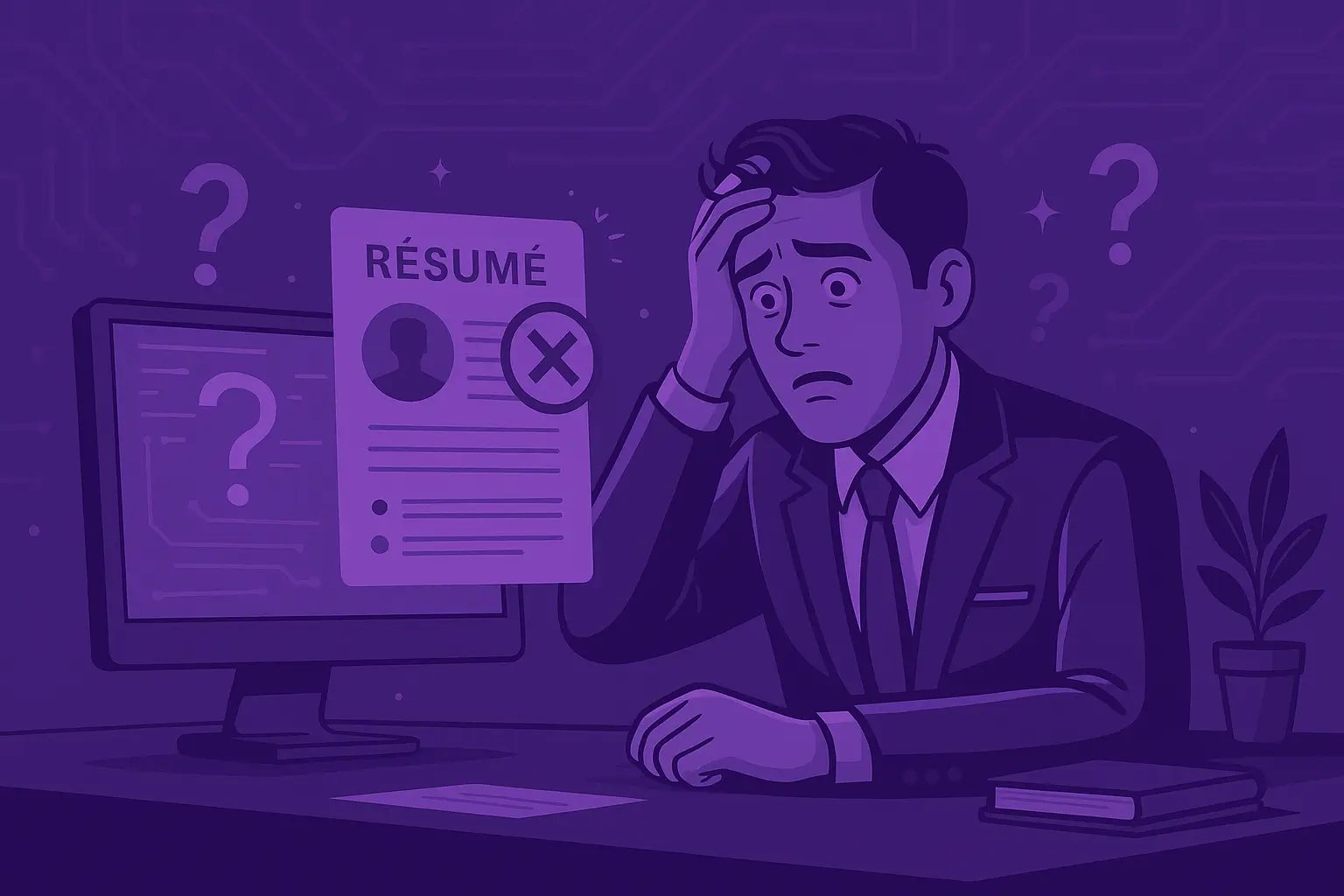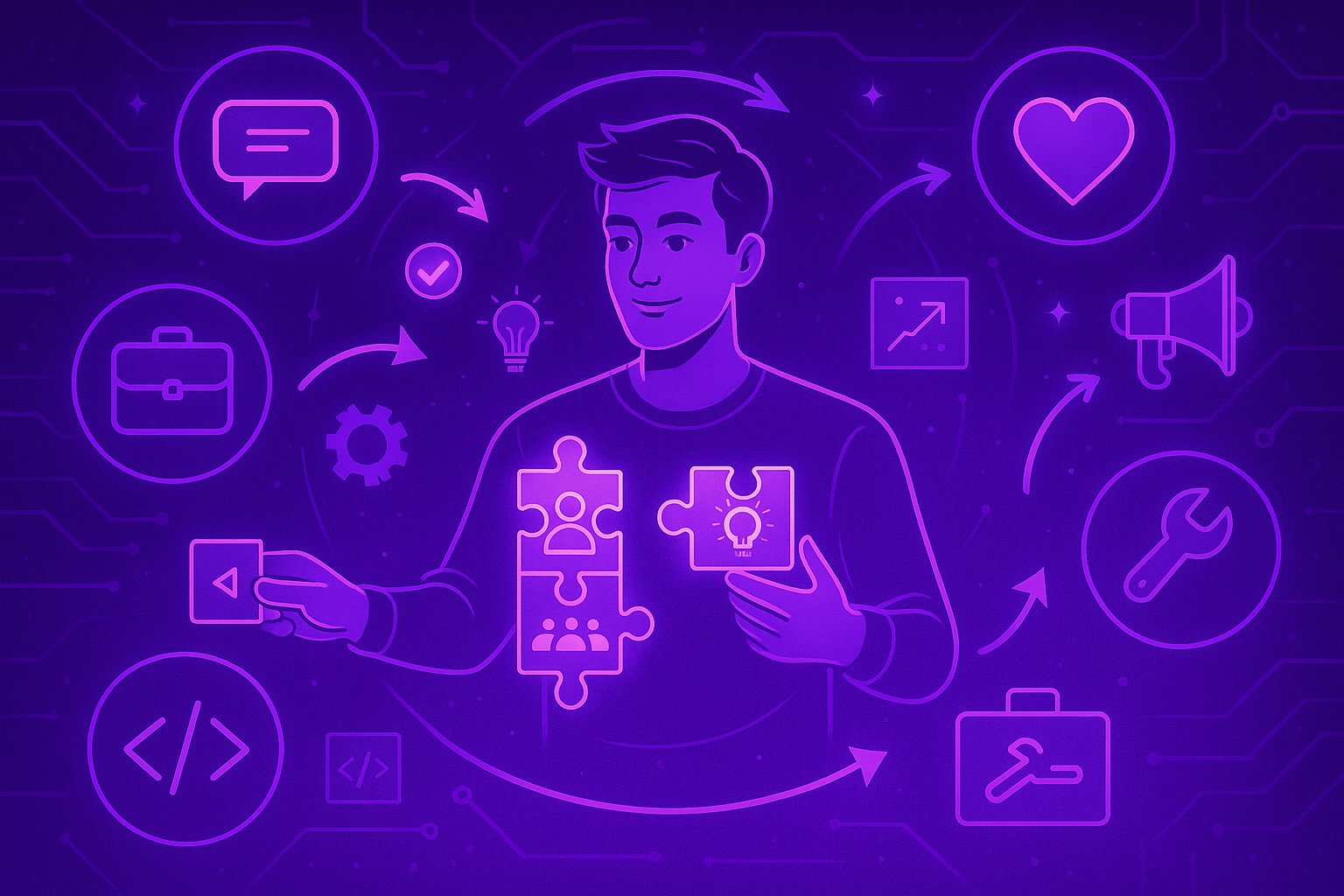Follow-up Email Etiquette: Impress Them After the Interview

You still have a chance to impress after your job interview is over.
Welcome to the etiquette of the follow-up email.
Your thank-you email and any other correspondence should further indicate your gratitude, professionalism, and interest in the position.
But be respectful of the way these things are done. You don’t want to annoy anyone, especially not at this stage.
While your emails should be brief, there’s a lot to consider.
Let’s go over it. It’s worth your time.
Timing is Everything
There are two proper times to send a follow-up email.
- A thank you email the day after the interview.
- A follow-up a week later if you haven’t heard anything back.
However, if your interviewer gave you an estimate of when you’d hear back, respect that waiting period.
Don’t push it. You don’t want to get ghosted.
Your Thank-You Email
Your first thank you letter can be sent even if you’ve been told to wait. The thank you letter is intended to say just that: Thank you for your time and interest. If you had multiple interviewers, consider sending each a separate thank you letter.
Remember: This is not your chance to find out when they’ll decide. That’s for the following email.
Your second email is optional and should be well-considered. Always wait until they have told you to respond. But if you have waited a week or so and haven’t heard anything about their decision, you may send a brief follow-up email.
A brief follow-up. Not a long letter. Don’t waste their time.
Just give them a nudge.
Writing Your Thank You Email
Here is the etiquette for your day-after-interview thank you email.
Personalize Your Message
You want to stand out from the others interviewed for this job. Sending a thank you letter can remind them of you and your qualifications. It’s also nice to thank them. They like that.
Proper etiquette can be personal and warm.
- Address your interviewer by name. This shows you’ve paid attention and that there is a connection between you.
- Reference topics or ideas discussed during the interview. Let them know which you found intriguing or relevant to your experience. Show them that you were engaged.
- Express a professional level of enthusiasm for what you learned during the interview. You want to be seen as eager to work with them.
- If you have a personal connection, such as a shared interest or mutual colleague, remind them of this. This can strengthen your relationship.
- If you promised to follow up with more information, do it now. They are waiting to hear from you. Prove that you’re responsible and reliable.
- Reiterate why you are excited about this opportunity and how you will fit in. Spotlight a unique skill or characteristic you bring to the position. Let them know that you know what you’re doing.
Maintain Professionalism
Remember ABP: Always Be Professional.
Even in a casual workplace, there are standards of professionalism to be followed. You are not friends. You are potential colleagues. Keep it classy.
Be Concise
Remember: Be brief.
Don’t overwhelm the interviewers with loads of information. They’ve had an opportunity to ask what they wanted to know. Now, with a thank you email, you just want to connect, be grateful, remind them of your best qualities, and sign off gracefully.
Writing the Email’s Subject Line
Keep the subject line short. Make it clear and professional. Include your name and the position you interviewed for, e.g., "Follow-Up: [Your Name] for [Position Name] Interview.”
Don’t try to sell yourself in the subject line. Just make sure they know who you are and for which position you interviewed.
Express Gratitude
When writing your thank-you email, thank the interviewer for their time and the opportunity to learn more about the role and the company.
Highlight Your Qualifications
Briefly reiterate why you are an excellent fit for the position. Highlight one or two key qualifications or experiences that align with the job’s requirements and were discussed during the interview.
Address Any Concerns
If any concerns about your qualifications were raised during the interview, briefly address them in a positive way, offering reassurance about your ability to meet the job's demands. Be sure to address any issues left for you to complete after the interview.
Writing a Follow-up Email
Your follow-up email serves a different purpose from your thank-you email.
In your thank you email, you wanted to show immediate gratitude while briefly closing any loose ends you promised to wrap up. These loose ends might include further information they need from you, answers to a question they asked, or your availability to begin work. Whatever they ask for, deliver it.
Your follow-up email is a nudge for them to keep you informed. It is a subtle, professional nudge. You are, after all, due proper consideration. You also want to remind them of who you are and make sure they keep you in mind.
To be tactful, you must make sure you wait long enough before sending a follow-up. A week is not a fixed time to respond to their silence. Give them time to interview others and consider your fit into the job and the culture. But a week or a bit longer is generally appropriate unless they’ve told you otherwise.
Focus on seeking information about the hiring process. Politely try to get specific dates for further action. Above all, appear patient and understanding. Don’t demand anything. Just ask nicely.
At the End of Each Email
Here’s how to wrap up your emails.
Include a Call to Action
Politely express your eagerness to receive feedback or learn the next steps in the hiring process. This could be as simple as saying, "I look forward to hearing from you regarding the next steps."
Closing and Signature
End your email with a professional closing, such as "Best regards" or "Sincerely," followed by your full name and contact information. You may include a signature, but it is not typically required.
Proofread Carefully Before Sending
Before sending, thoroughly proofread your email for spelling, grammar, and punctuation errors to ensure professionalism. You don’t want to annoy or alienate anyone due to your own mistakes. Typos can get a candidate rejected.
If you have access to AI grammar tools, you may wish to run your letters through them just to make sure you haven’t missed anything.
Customizing Your Thank You Letter
Our service, AIApply, automates your job search process, including:
- Tailoring your ATS-friendly résumé to the job description.
- Generating a custom cover letter based on your résumé and the job description.
- Generating a thank-you letter for the next day (wait 24-48 hours before sending).
We help you with:
- A high-quality job board for excellent jobs with great companies.
- AI mock job interviews for practicing your question-answering skills.
- Creating professional headshots from your own photographs.
- Translating your résumé for international job applications.
- Résumé hosting for sharing online links to your job qualifications.
Looking Forward
You may have questions.
Contact us by email for swift answers about email etiquette, AI-powered job search automation, and anything you might find confusing about the job search process.
Elevate your job search with AI.
Visit AIApply to get started for free.
You still have a chance to impress after your job interview is over.
Welcome to the etiquette of the follow-up email.
Your thank-you email and any other correspondence should further indicate your gratitude, professionalism, and interest in the position.
But be respectful of the way these things are done. You don’t want to annoy anyone, especially not at this stage.
While your emails should be brief, there’s a lot to consider.
Let’s go over it. It’s worth your time.
Timing is Everything
There are two proper times to send a follow-up email.
- A thank you email the day after the interview.
- A follow-up a week later if you haven’t heard anything back.
However, if your interviewer gave you an estimate of when you’d hear back, respect that waiting period.
Don’t push it. You don’t want to get ghosted.
Your Thank-You Email
Your first thank you letter can be sent even if you’ve been told to wait. The thank you letter is intended to say just that: Thank you for your time and interest. If you had multiple interviewers, consider sending each a separate thank you letter.
Remember: This is not your chance to find out when they’ll decide. That’s for the following email.
Your second email is optional and should be well-considered. Always wait until they have told you to respond. But if you have waited a week or so and haven’t heard anything about their decision, you may send a brief follow-up email.
A brief follow-up. Not a long letter. Don’t waste their time.
Just give them a nudge.
Writing Your Thank You Email
Here is the etiquette for your day-after-interview thank you email.
Personalize Your Message
You want to stand out from the others interviewed for this job. Sending a thank you letter can remind them of you and your qualifications. It’s also nice to thank them. They like that.
Proper etiquette can be personal and warm.
- Address your interviewer by name. This shows you’ve paid attention and that there is a connection between you.
- Reference topics or ideas discussed during the interview. Let them know which you found intriguing or relevant to your experience. Show them that you were engaged.
- Express a professional level of enthusiasm for what you learned during the interview. You want to be seen as eager to work with them.
- If you have a personal connection, such as a shared interest or mutual colleague, remind them of this. This can strengthen your relationship.
- If you promised to follow up with more information, do it now. They are waiting to hear from you. Prove that you’re responsible and reliable.
- Reiterate why you are excited about this opportunity and how you will fit in. Spotlight a unique skill or characteristic you bring to the position. Let them know that you know what you’re doing.
Maintain Professionalism
Remember ABP: Always Be Professional.
Even in a casual workplace, there are standards of professionalism to be followed. You are not friends. You are potential colleagues. Keep it classy.
Be Concise
Remember: Be brief.
Don’t overwhelm the interviewers with loads of information. They’ve had an opportunity to ask what they wanted to know. Now, with a thank you email, you just want to connect, be grateful, remind them of your best qualities, and sign off gracefully.
Writing the Email’s Subject Line
Keep the subject line short. Make it clear and professional. Include your name and the position you interviewed for, e.g., "Follow-Up: [Your Name] for [Position Name] Interview.”
Don’t try to sell yourself in the subject line. Just make sure they know who you are and for which position you interviewed.
Express Gratitude
When writing your thank-you email, thank the interviewer for their time and the opportunity to learn more about the role and the company.
Highlight Your Qualifications
Briefly reiterate why you are an excellent fit for the position. Highlight one or two key qualifications or experiences that align with the job’s requirements and were discussed during the interview.
Address Any Concerns
If any concerns about your qualifications were raised during the interview, briefly address them in a positive way, offering reassurance about your ability to meet the job's demands. Be sure to address any issues left for you to complete after the interview.
Writing a Follow-up Email
Your follow-up email serves a different purpose from your thank-you email.
In your thank you email, you wanted to show immediate gratitude while briefly closing any loose ends you promised to wrap up. These loose ends might include further information they need from you, answers to a question they asked, or your availability to begin work. Whatever they ask for, deliver it.
Your follow-up email is a nudge for them to keep you informed. It is a subtle, professional nudge. You are, after all, due proper consideration. You also want to remind them of who you are and make sure they keep you in mind.
To be tactful, you must make sure you wait long enough before sending a follow-up. A week is not a fixed time to respond to their silence. Give them time to interview others and consider your fit into the job and the culture. But a week or a bit longer is generally appropriate unless they’ve told you otherwise.
Focus on seeking information about the hiring process. Politely try to get specific dates for further action. Above all, appear patient and understanding. Don’t demand anything. Just ask nicely.
At the End of Each Email
Here’s how to wrap up your emails.
Include a Call to Action
Politely express your eagerness to receive feedback or learn the next steps in the hiring process. This could be as simple as saying, "I look forward to hearing from you regarding the next steps."
Closing and Signature
End your email with a professional closing, such as "Best regards" or "Sincerely," followed by your full name and contact information. You may include a signature, but it is not typically required.
Proofread Carefully Before Sending
Before sending, thoroughly proofread your email for spelling, grammar, and punctuation errors to ensure professionalism. You don’t want to annoy or alienate anyone due to your own mistakes. Typos can get a candidate rejected.
If you have access to AI grammar tools, you may wish to run your letters through them just to make sure you haven’t missed anything.
Customizing Your Thank You Letter
Our service, AIApply, automates your job search process, including:
- Tailoring your ATS-friendly résumé to the job description.
- Generating a custom cover letter based on your résumé and the job description.
- Generating a thank-you letter for the next day (wait 24-48 hours before sending).
We help you with:
- A high-quality job board for excellent jobs with great companies.
- AI mock job interviews for practicing your question-answering skills.
- Creating professional headshots from your own photographs.
- Translating your résumé for international job applications.
- Résumé hosting for sharing online links to your job qualifications.
Looking Forward
You may have questions.
Contact us by email for swift answers about email etiquette, AI-powered job search automation, and anything you might find confusing about the job search process.
Elevate your job search with AI.
Visit AIApply to get started for free.
Don't miss out on
your next opportunity.
Create and send applications in seconds, not hours.








